25 Surprising Benefits of Walking Backwards: Why Experts Say It's Better Than 1,000 Steps Forward

We all want quick and simple ways to improve our health, but with so much conflicting advice, it's hard to know where to start. One unusual yet effective health practice that has gained attention is walking backwards also known as retro walking. This intriguing exercise technique, studied by researchers for decades, offers a range of surprising benefits for both physical and mental well-being.
Professor Janet Dufek from the University of Nevada, Las Vegas, who has been studying the benefits of backward walking for over three decades, provides insights into this surprising practice. Backward walking is proving to be an excellent addition to people's exercise routines. Read on to learn the science behind retro walking and discover how it might benefit you.
Try an Ancient Practice with Modern Benefits
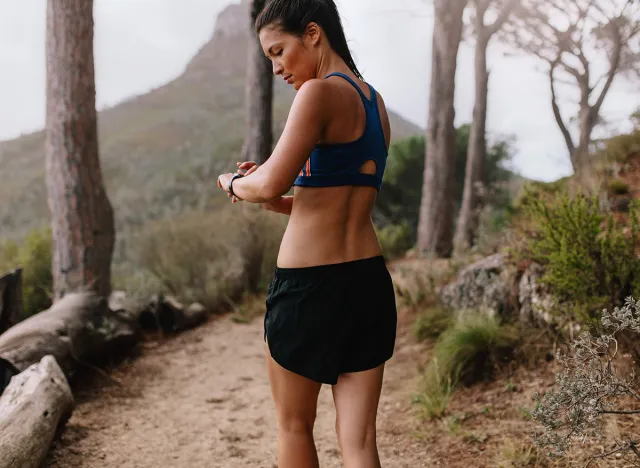
Walking backwards, also known as retro walking, is an ancient practice originating in China. This technique has been used in physiotherapy for decades to rehabilitate lower leg injuries and improve gait and mobility. Dufek, who has been studying this form of exercise for about 20 years, says on BBC podcast, "Walking backwards can help people to improve balance, avoid falls and recover from injuries."
Learn from Historical Examples
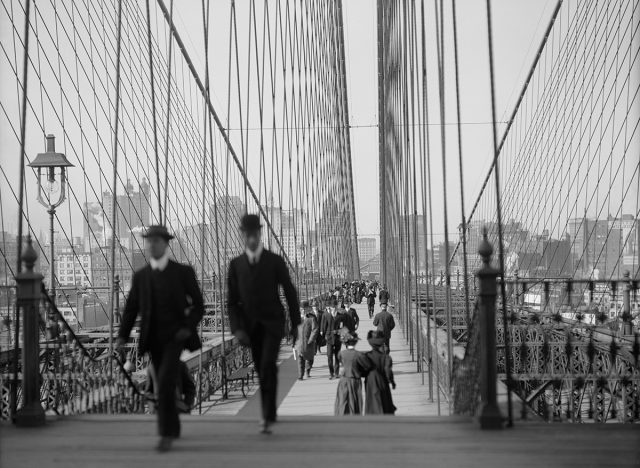
The practice of backward walking isn't new to the Western world either. One of the early American pioneers was Patrick Harmon, who more than a century ago, walked backwards from San Francisco to New York City.
Burn More Calories

Backward walking offers surprising benefits for physical fitness. You burn more calories than when you walk forward. Studies have found that walking backwards uses about 30% more energy compared to walking forward at the same speed.
Lose Weight
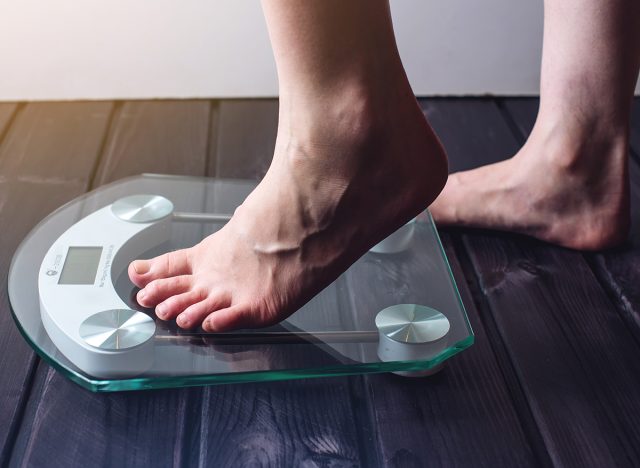
The increased energy expenditure can lead to weight loss. A South African study found that healthy volunteers lost an average of 2.5% of their body fat when they added backwards walking to their exercise regime.
Engage Different Muscles
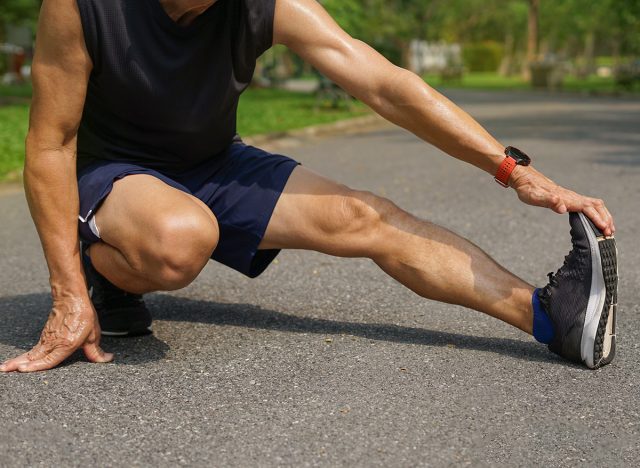
Backward walking engages different muscle groups. It uses muscles that are less active during forward walking, such as your calves and shins, as well as your quadriceps, that large muscle at the front of your thigh. Kristyn Holc, a physical therapist at Atlantic Sports Health Physical Therapy in New Jersey, adds, "Walking forward uses muscles on the front of the thigh—the quadriceps, or 'quads'—but these muscles are even more strongly activated when moving in reverse."
Get an Intense Workout
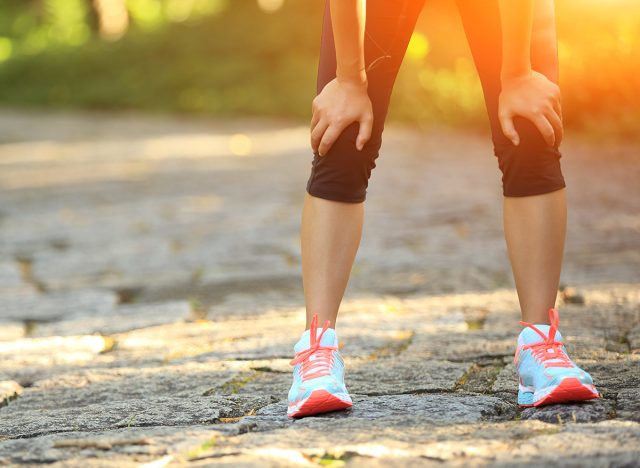
The intensity of the workout is notable. A small Texan study found that blood lactate levels were three times higher when walking backwards, which is a measure of how hard the muscles are working.
Boost Your Memory
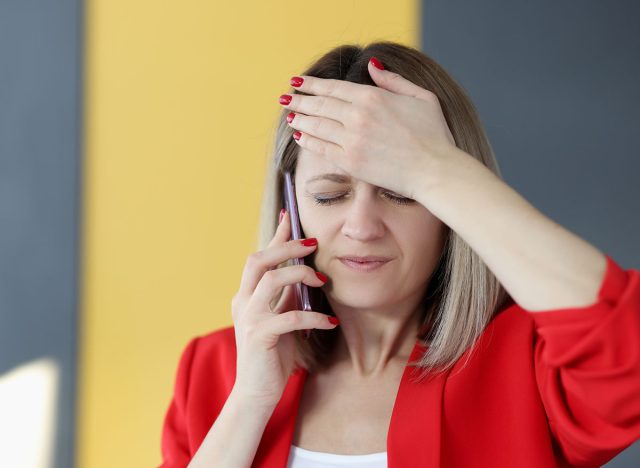
Perhaps the most unexpected benefit of backward walking is its positive impact on cognitive function. Research from the University of Roehampton, UK, showed that a walking backwards group consistently remembered more about a video than either forward walking or standing still groups.
Improve Your Reaction Times

Cognitive benefits extend beyond memory. A similar study found that backward walking increased volunteers' reaction times.
Activate Your Brain

Stepping backwards is a powerful trigger for mobilizing your brain's resources. This is likely due to the activation of the prefrontal cortex, a key area for executive function. André Noël Potvin, a clinical exercise specialist, and educator, says, "When you start to walk backwards, you actually start to rebalance the forces around the ankle, knee, hip, and lower back.
RELATED: I Hit 60 and These 15 Anti-Aging Foods Keep Me Fit and Feeling 20 Years Younger."
Relieve Back Pain

Professor Dufek highlights the potential of backward walking for alleviating back pain. She explains, "Backward walking could assist with reducing back pain via the fact that the hamstrings, the muscles on the backs of your legs, stretch when you backward walk."
See Research-Backed Results

In her research, Professor Dufek found promising results: "80% of them [participants] self-reported reduced back pain" after a five-week backward walking regimen.
Increase Your Flexibility

Flexibility is another area of improvement. Professor Dufek shares, "We had a small cohort of older adults and we had them backward walk for 15 minutes a day, five days a week, and we did this for four weeks and they all improved their back flexibility."
Enhance Your Balance and Stability

Backward walking can significantly improve balance, especially in older adults. Professor Dufek reports, "We chose a group of elderly individuals, and they performed backward walking for four weeks, five days a week, 15 minutes at a time… the majority of the participants in the study actually improved their stability or their balance by midway through the intervention."
Understand the Mechanics
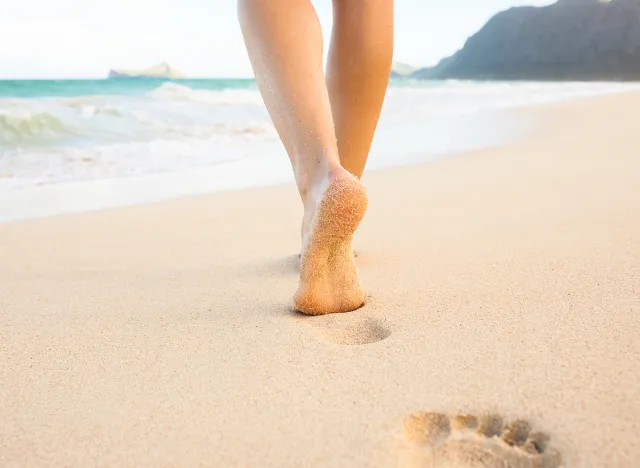
Professor Dufek explains biomechanics: "When we walk forward, the first part of the foot to hit the ground is the heel or what we call the rear foot. … In backward walking, what contacts the ground first is your forefoot, and often your heel will not even touch the ground."
RELATED: 31 Fitness Tips Every Beginner Needs to Look Sexy, According to Coaches
Try a Low-Impact Exercise

This unique gait pattern offers benefits. Professor Dufek notes, "Since the heel's not hitting the ground, we don't have that high impact." Kristyn Holc adds, "Walking backward relieves pressure on the inner side of the knee, where many older adults develop arthritis."
Start Safely
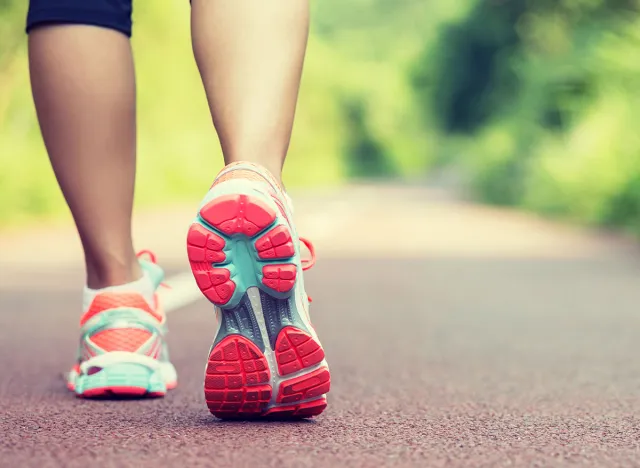
For those interested in trying backward walking, safety is paramount. You can do it at home, but you must make sure you have a clear path. Even better is outdoors if you've got someone who can guide you.
Build Up Gradually
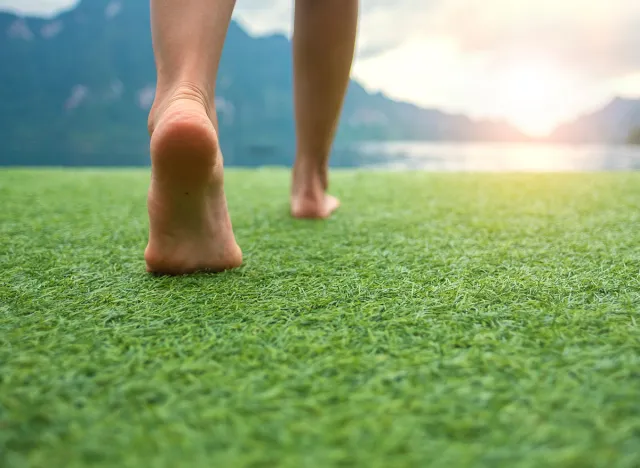
Professor Dufek suggests starting slowly: "Start at probably a minute or two and then maybe every second day add an additional minute." She recommends aiming for about five minutes by the end of the first week.
Use a Treadmill

For added safety, Professor Dufek recommends using a treadmill: "You might want to try walking on a treadmill because you can use those rails for subtle body support."
Walk with a Partner
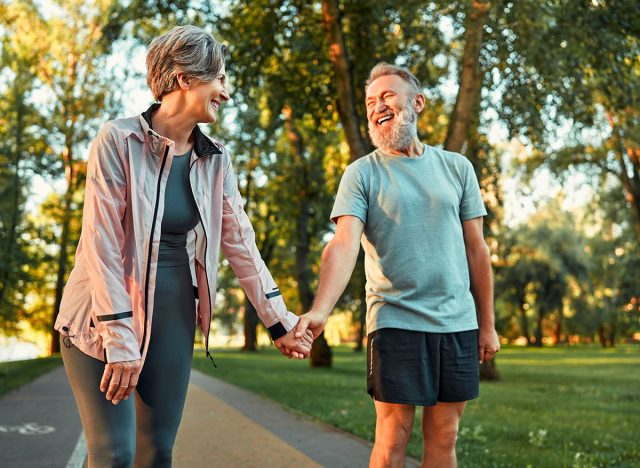
Another safety tip from Professor Dufek: "Walk with a partner. You're facing each other, and you hold hands. So you'll be walking backwards, the other person will be walking forward and then you can switch."
Learn from Others' Experiences

Nina, a social worker from Leicester, UK, tried the backward walking challenge for a week. She reports, "I'm certainly enjoying having lots of laughs at each other's expenses in terms of mine and my daughter trying to outdo each other."
RELATED: I'm a Nutritionist and Here Are 25 Weight Loss Truths You Need to Hear
Expect Some Initial Discomfort
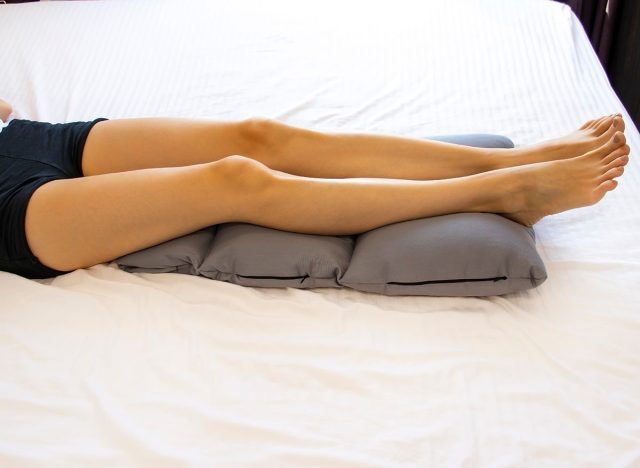
Nina noted some initial discomfort: "I did notice a few twinges in my lower back. Not anything painful. I put this down to maybe using muscles that I haven't used frequently." This experience is common, as backward walking can initially cause muscle soreness, particularly in the calves and lower back.
Make It a Family Activity

Nina found the experience enjoyable and recommendable, especially as a fun activity to do with children. She shares, "It was lots of fun. We spent a lot of time laughing at each other."
Feel the Difference

People who have tried it say backward walking can feel strangely soothing once you get into the rhythm. You can feel that you're working completely different muscles than normal.
Address Age-Related Changes
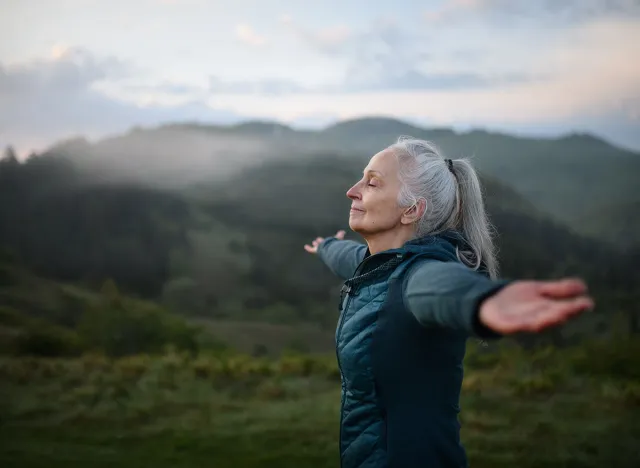
André Noël Potvin highlights the benefits for older adults: "Walking backwards helps with the physical changes of getting older, such as shifts in gait and posture." This is particularly important for maintaining mobility and independence as we age.
RELATED: I'm a Nutritionist and Here Are 19 Protein Truths You Need to Hear
Overcome Self-Consciousness
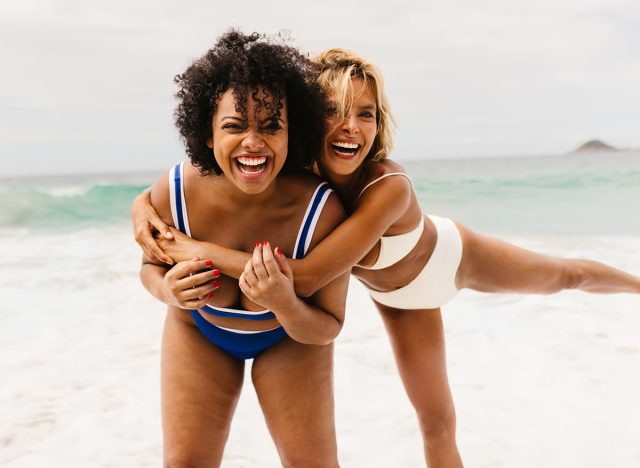
Janet Nevala, a 62-year-old nurse from Quebec, shares her experience: "Every time I walk, I just do a little twirl and walk backwards for a bit, and I'll do it just a few times during my walk. People do kind of look at me. I've had a couple of smiles." She adds, "The balance part is really important because I don't want to fall again."
While it may look eccentric, backward walking offers a range of health benefits, from improved physical fitness and back pain relief to enhanced cognitive function and balance. If you normally walk forwards at the gym, why not try going backwards? You'll work different muscles, improve your balance and waistline, and may even boost your brain. André Noël Potvin, who has helped hundreds of people try backward walking, notes: "People who have foot problems, ankle problems, knee problems, hip problems or back problems … they start to notice less impact and greater benefit." d if you enjoyed this article, don't miss 12-3-30 Walking Method: 20 Proven Tips to Lose Weight Faster.




